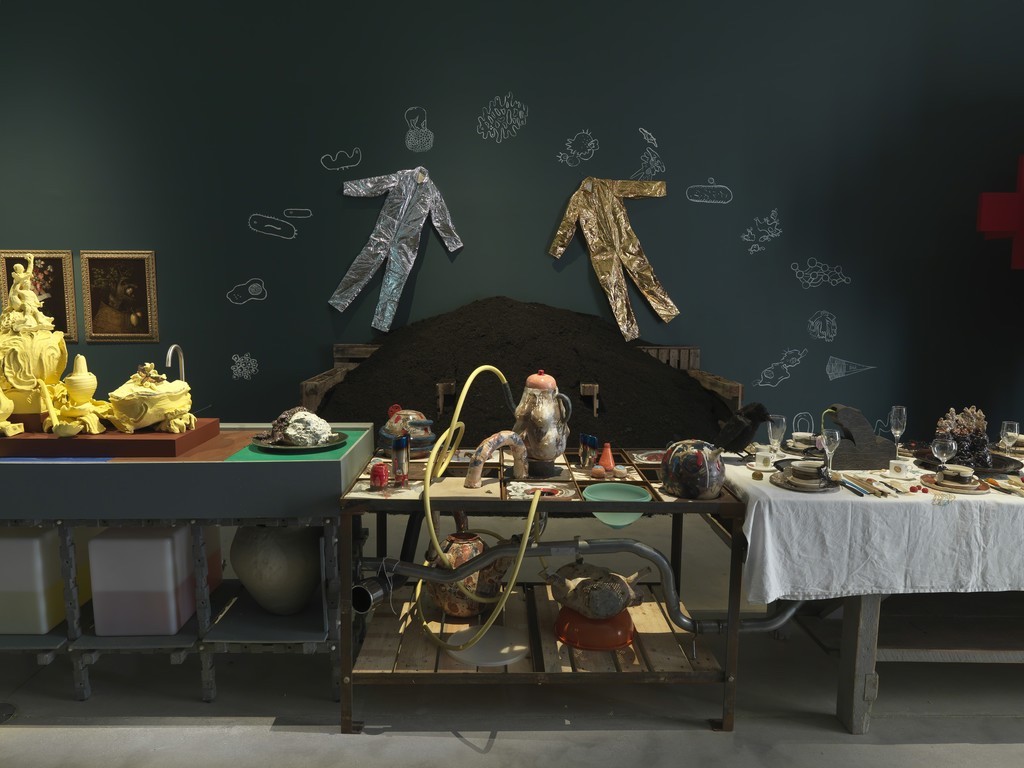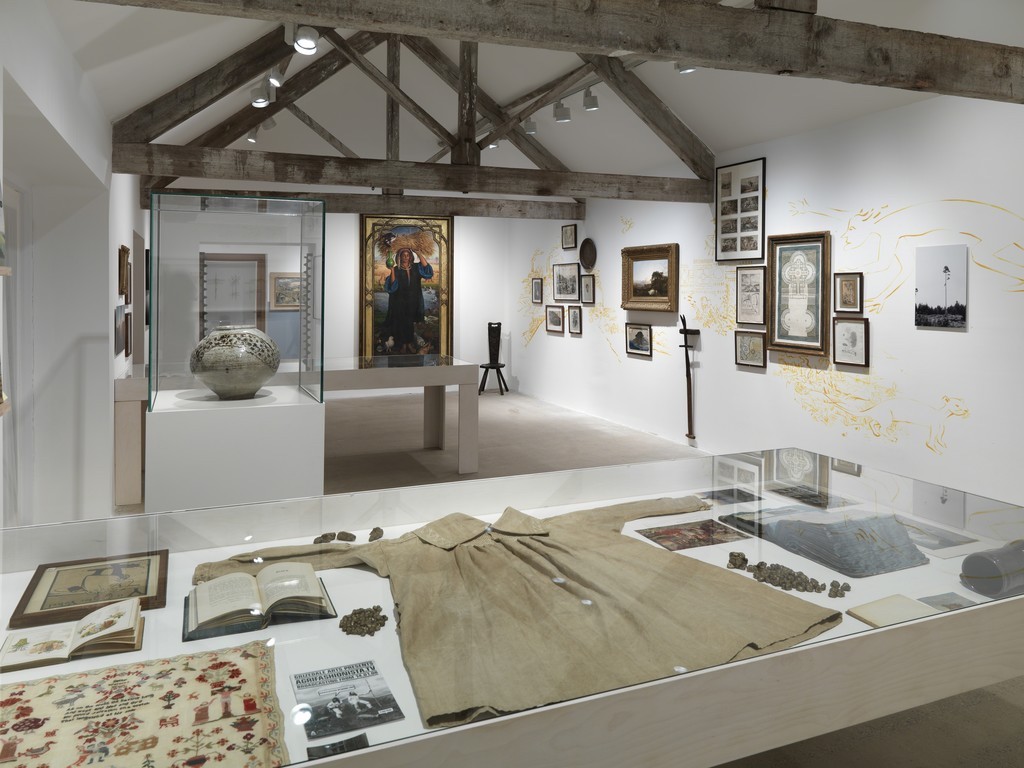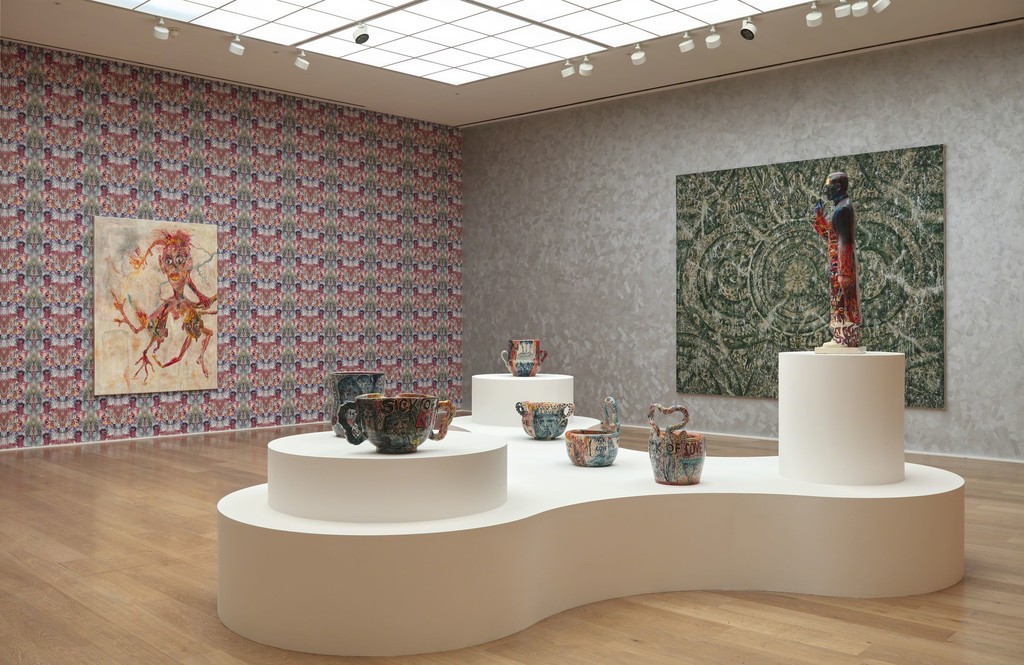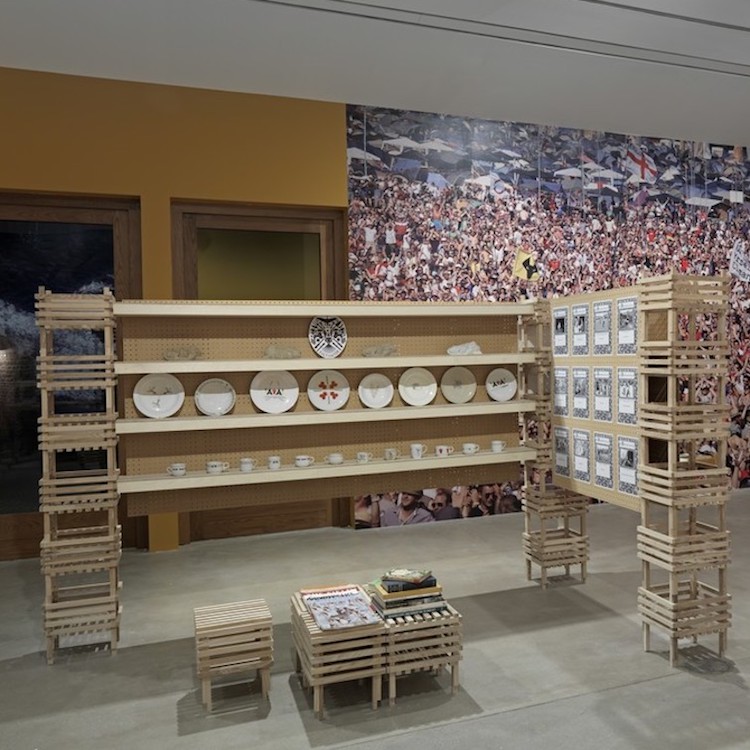SOMERSET––I don’t have much trust for curator Adam Sutherland’s cornucopic musing upon the idea of ‘rural’: The Land We Live in, The Land We Left Behind at the Hauser & Wirth in Somerset, England. Before telling why I don’t trust it, let me paint the picture:
Making use of the entire gallery and its grounds, Sutherland has developed an immersive art world version of a rural environment: Starting in the goat pastures, proceeding to an indoor processing area, moving into a living room, then a dining room (with an apple-laden larder), and finally into the general store that goes beyond to the city.
You can take the comprehensive journey for yourself, with Sutherland as your guide, in this eight minute film:
Beautiful and in many cases inspiring as this exhibit may be, I cannot shake my feelings of distrust because I wake up before the sun in my rurally-situated home and drive an hour to the city where I stand behind a deli counter at Whole Foods. While I wait there, for nearby gallery gofers to come and get their opening hors d’oeuvres, I contemplate the threshold where the façade of the store—soothing pastels plastered full with words like “Sustainable” and “Healthy”—gives way to the actual grey and piping-strewn industrial building.


The gofers, when they come, pop up at the deli counter only long enough to collect their bucolic platter of pastoral cheeses (shipped wholesale hundreds of miles), so they don’t usually have enough time to consider this threshold. And, if the gofer is only a cog in the vast machinery of the art world, I do not imagine those openings are considering that threshold either.
I don’t blame the art world for that lack of consideration. But I do feel that someone should be held responsible for how Whole Foods handles this deception, and I also feel part of that responsibility rests within the art world. Because the aesthetic calculation of just how high a façade should be, so a consumer never considers the actual (about ten feet overhead, it turns out), has a larger impact: when I leave that $100,000-daily grossing store and drive an hour back to the one-store-economy of my village, the consequences of such a disconnect becomes painfully obvious.
If you get my drift, you may now understand why I distrust this exhibit. For all its beauty, the purpose of that beauty feels awash and ambiguous, and that makes me suspect façade. Without any clear accounting of our contemporary politics, which have so much to do with a disconnect between rural and urban, I can’t help but interpret the concepts presented in this art as just another parade of oblivious paternalism from the so-called ‘liberal’ elite: using the word ‘functional’ for things no one is going use, uncritically renovating imperial-era Edenism, tokenizing the local ‘folk’ through the sale of trinkets, and concluding the journey by transforming everything through an urban lens…
It feels like a high fashion runway show for what will eventually trickle down to become Whole Foods’ next pastel platitude. I don’t know, maybe I’m wrong. After all, I’ve heard stories of how all those cheeses the gofers get have—because Whole Foods has made them aesthetically appealing and well, accessible—invigorated the economies of multiple rural regions.


Hey—you’re in the art world, aren’t you? Could you do me a favor, please, next time you send a gofer to the counter? Please ask them to look up at the threshold—or better yet, join me on the drive home—so they might compare what they’ve seen there, with what’s in your exhibit. I’m sure enough trips and you’ll earn my trust soon enough.
Love or loathe this exhibition from the world of contemporary ceramic art and contemporary ceramics? Share your thoughts in the comments section below for a chance to win our “Best Comment of the Month” contest. One lucky commenter will win a copy of $100 book Shifting Paradigms signed to the winner by Garth Clark and Mark Del Vecchio.

Hello, I get your criticism and it is wholly justified, the art world commodifies ideas for the commercial sector – and for sure that is what happening with this show. Exhibitions in the art world are symbolic, they are at best representations of ideas and things that have happened. Much of what passes for art is just things that looks like they might represent something but all they really represent is the desire to make art. In my defence i would say that if you follow through on most of the things represented in the exhibition you will find things actually happening in the real world – check out Sweetwater Foundation or the actual on the ground work of Grizedale arts and its pub and gardens http://www.lakedistrictfarmersarms.com